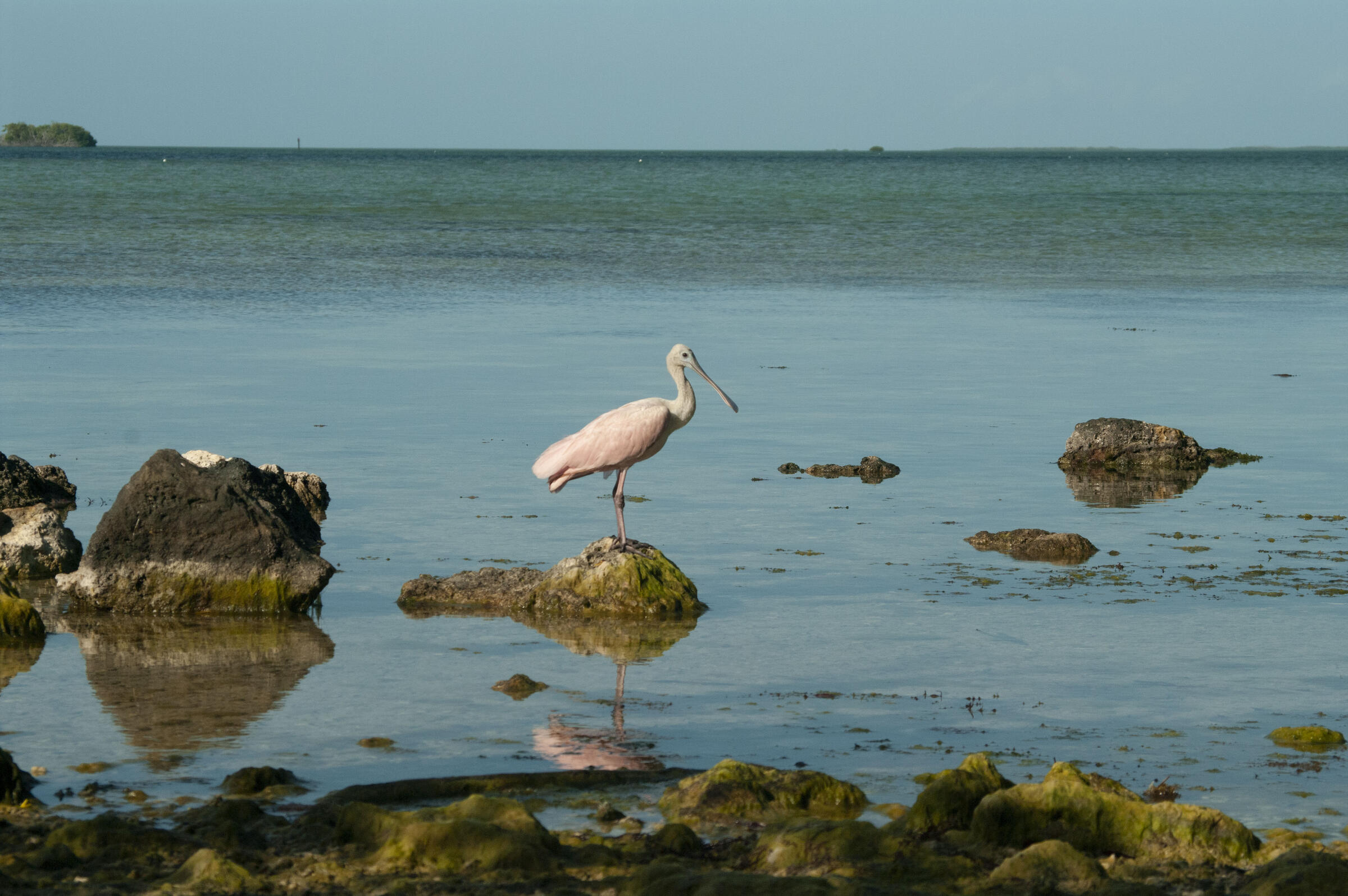It was just after sunrise on a partly cloudy morning in mid-December when a small group of birding enthusiasts set out on a remarkable journey in the name of avian science. From the Everglades Science Center (ESC) in Tavernier, Florida, the group of nine gathered up their gear including binoculars, field guides, checklists, and lunch before fanning out to birding hotspots from Key Largo to Plantation Key as part of the Audubon Christmas Bird Count (CBC).
While many of the 2021 participants were new to the effort at ESC, the effort itself is hardly new – counts from this region, referred to as a “count circle,” have been logged in the CBC record books annually since 1954. But the effort is actually much older than that – the first official Christmas Bird Count was conducted in 1900. Frank Chapman, an ornithologist who had participated in the very first meeting of the Florida Audubon Society in Maitland earlier that year, along with 26 other bird conservationists, unknowingly started a tradition of “hunting” birds for science instead of sport that now engages thousands.
A first-time participant in 2021, Alex Blochel is a Senior Biologist at ESC who led the count and compiled the data. Due to COVID, Blochel found that the human aspect of this year’s count was the biggest challenge.
“It was a very tough year,” Blochel said. The experience is meant to bring people together to have fun and learn however, several experienced participants were not able to participate, and social distancing made the typical process of carpooling very difficult. Blochel formed three small groups instead of the typical six, with two hitting locations on land and one plying the waters of Florida Bay. They still managed to cover nearly 60 miles of bird habitat!
Blochel’s compiled data shows a high count of 169 Brown Pelicans, only 26 Turkey Vultures (compared to last year’s high of 222), and a Roseate Spoonbill, the unofficial mascot of the ESC. His favorite sighting of the day? A Willet.
Despite having fewer eyes on the sky, the data collected still has meaning. His team managed to find 55 species and count 1,227 individuals.
Meanwhile, about 90 miles northwest in Naples, another Christmas Bird Count took place at Corkscrew Swamp Sanctuary (CSS). While the first two CSS CBCs were logged in 1958 and 1959, the effort was shelved and reorganized in 1980, and now boasts 41 contiguous years of data. Sally Stein, Director of Public Programs for CSS, has been the count compiler for CSS since 2001.
Stein had fifty participants split up into 14 groups covering her count circle, which includes the area from Immokalee to Golden Gate Estates. In addition to teams at Bird Rookery Swamp and driving the Corkscrew Island neighborhood and beyond, several groups spread out across the Sanctuary on the boardwalk, at Panther Island, and at other habitats at the north end.
“We had a few more people than last year, but not as many as in 2019,” said Stein.
She was thrilled to see the return of some first-time participants from last year, relieved to have a few experienced participants return after missing the CBC for the past couple of years, and happy to welcome several people new to the process, including Sanctuary Director Lisa Korte with husband, David, and Stein’s six-year-old nephew, Joaquim. Another person new to the count was a retired schoolteacher who had recently moved to the area from New York State. She had heard of the Christmas Bird Count and had wanted to participate for years and finally got her chance.
As the long day comes to a close, teams return with lengthy checklists and sometimes great photos. Stein is still compiling her data but so far, she reports from 13 of the teams in her count circle that there were 10,525 individual birds made up of 106 species this year. Highlights from her team included a pair of Painted Buntings, two Indigo Buntings, several Tricolored Herons, and even a Cedar Waxwing (yes, one.) Her favorite sighting? A Pied-billed Grebe.
Once compiled, all of the data is sent to Audubon’s CBC scientists who use it to analyze bird trends throughout Florida and the U.S. This community science effort is not only a great way to engage bird enthusiasts in conservation, but it is an important, long-term measure of the health of bird populations. When birds tell us about the health of our environment, we should be listening.
Learn more about the Audubon Christmas Bird Count.










